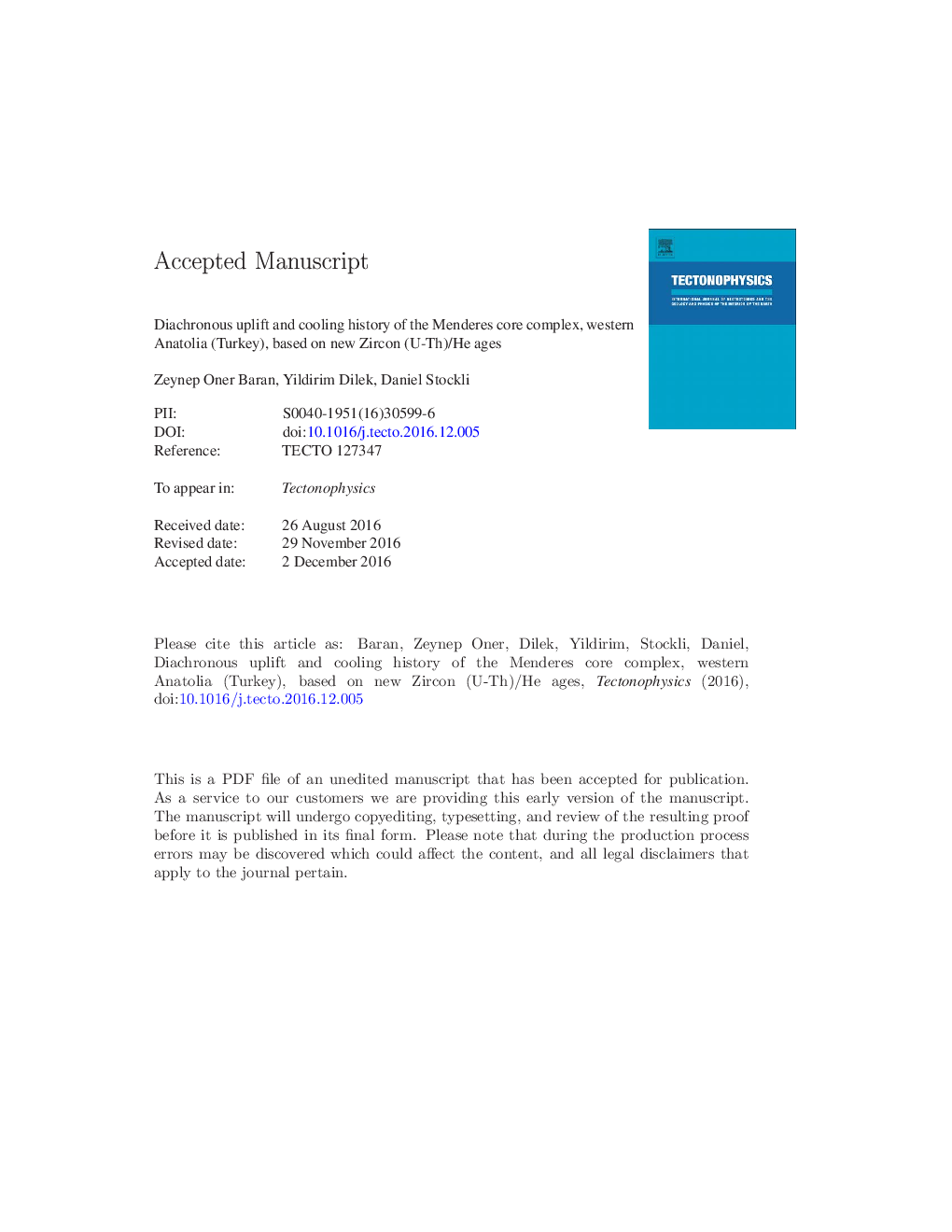| Article ID | Journal | Published Year | Pages | File Type |
|---|---|---|---|---|
| 5781709 | Tectonophysics | 2017 | 98 Pages |
Abstract
New (U-Th)/He thermochronology data from the syn-extensional granitoids in the central part of the Menderes Massif in western Turkey reveal a minimum slip rate of 12.5 km/Myr along the Alasehir detachment (~ 14° dip angle) and denudation rates between 1.75 km/Myr and 3.25 km/Myr between 4 Ma and 2 Ma. These values suggest relatively fast exhumation of the Central sub-massif, associated with cooling rates between 53 °C/Myr and 128 °C/Myr, which are higher than the estimated footwall cooling rates (60 °C/Myr to 120 °C/Myr) from the Northern sub-massif. Based on the initial crystallization ages of the syn-extensional granitoid intrusions and their exhumation-related cooling ages, our thermochronological findings suggest that the Central sub-massif in Menderes underwent accelerated uplift and faster exhumation in the latest Cenozoic than the Northern and Southern sub-massifs. This latest doming and rapid extension of the Central sub-massif was associated with the asthenospheric upwelling beneath the region and the related Na-alkaline, Kula volcanism. Our results indicate that the Menderes Massif has had a diachronous uplift and cooling history during its extensional tectonic evolution in the late Cenozoic. Thermal weakening of the young orogenic crust in western Anatolia via both lithospheric and asthenospheric melting episodes and magmatism produced higher than normal geothermal gradients and played a significant role in core complex formation.
Related Topics
Physical Sciences and Engineering
Earth and Planetary Sciences
Earth-Surface Processes
Authors
Zeynep Oner Baran, Yildirim Dilek, Daniel Stockli,
